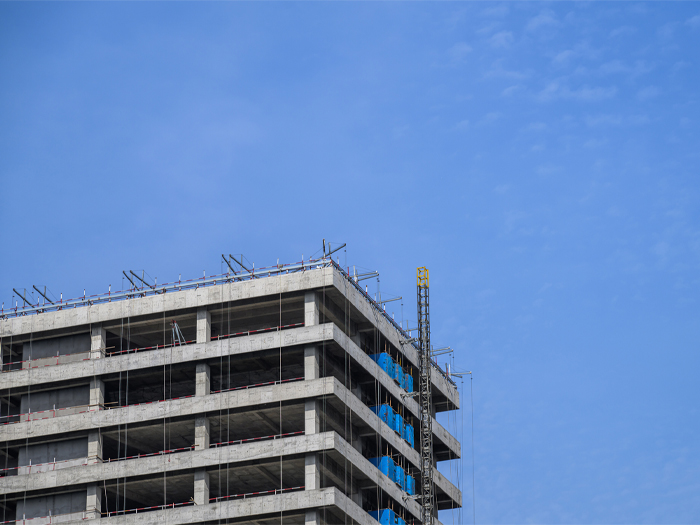Construction Defect Claims on the Rise: Understanding the Trends and Impacts

Construction projects are booming.
That’s because demand is returning to its pre-pandemic levels, no longer impeded by mass closures, supply chain stalls or a lack of labor. Businesses and homeowners are looking to build, and the industry is more than happy to oblige.
“The pre-COVID building boom, combined with lower interest rates and affordability, continues to drive residential, except single family new sales, and commercial construction, including infrastructure, hospitals, medical facilities and warehousing,” said John Posa, SVP Nationwide E&S Brokerage Construction.
One report noted the collective value of construction projects at play today equals close to $500 billion. Reuters reported earlier this year that construction spending “shot up 11.3% on a year-on-year basis in November [2023].”
It’s an exciting time for the construction industry. However, massive growth can mean equally substantial risk. Now is the time for risk professionals to review their exposures and get the right construction risk mitigation partners in place.
Construction Defect Claims Trending
Perhaps the biggest challenge the industry faces (after worker safety) is construction defect claims. These types of claims stem from any defect in a build that deviates from what was promised — leaky plumbing, cracks in the foundation, mold and more.
“The tail on construction defect claims are increasingly being filed by plaintiff attorneys right up against the deadline set by the statute of repose, which can be as far out as 10 years from the completion of the project or the issuance of the certificate of occupancy,” said Posa.
Several factors are coming into play in construction to drive up defect claim activity.

John Posa, SVP Nationwide E&S Brokerage Construction
For one, Posa noted, there’s been an overall increase in municipality claims, “which can be attributed to the $1.2 trillion infrastructure bill passed in 2021,” he said. “As the funds from this bill are being allocated, we’re starting to see a corresponding rise in claims activity, particularly in states like Texas.”
Construction defect claims are also being triggered by an increase in high-end custom house projects, which are valued at $10 million to $15 million each — and sometimes more.
“This trend, fueled by current economical factors such as interest rates, is triggering a number of new construction defect claims,” Posa said.
“Additionally, we’re seeing delays or abandonment of properties as part of larger construction defect claim activity. Factors such as mechanical liens, failure to pay and increases in adjustable interest rates are contributing to these claims. In some cases, people walk away from projects, leading to allegations of construction defect claims being filed in retaliation against general contractors who have left a site,” Posa shared.
Added to the increase in claims is the increase in nuclear verdicts plaguing construction. Juries are awarding larger and larger awards to plaintiffs, especially if they perceive some injustice has been inflicted in the process.
“This phenomenon of social inflation and nuclear verdicts does indeed apply to construction, whether they involve bodily injury, property damage or construction defect claims,” Posa said.
How the Market Is Responding
Property values have doubled in some places over the past few years, directly increasing the cost of repairs and settlement values for construction defect claims.
Coupled with the types of builds on the docket, like medical facilities or high-end homes, “prominent plaintiffs’ firms and attorneys are now more selective in the construction defect cases they pursue,” Posa said, “focusing on those with high dollar values.”
This has had “a significant impact on carrier appetite in the construction defect insurance market.”
Carriers have pulled out of the market due to a number of factors. For example, unsustainable business practices or a lack of adaptability could easily deter a carrier and make the sector a less-than-ideal environment to operate in.
“Changes in distribution network relationships could stem from a misalignment of goals or a failure to foster mutually beneficial partnerships. It’s essential to cultivate strong, long-lasting relationships built on trust and shared objectives,” Posa offered as another example as to why some carriers have pulled back.
“Carriers need to adapt quickly to changes in their portfolios and risk appetites, taking into account the inflationary and economic factors we’ve witnessed over the past five years,” he added. “Pricing and risk assessment strategies must evolve to keep pace with the rapidly changing market conditions.”
Keeping Up with Construction Trends
Carrier appetite is one area construction risk professionals should review. For insureds, bolstering mitigation tools and managing risk in the current market environment require a multifaceted approach.
“The most important consideration for insureds is their own unique needs and circumstances,” said Posa. Every environment is different, therefore requiring a unique set of risk tools and covers to remain whole in the event that a construction defect claim comes their way.
Insureds should be looking for insurers that are keeping pace with today’s construction trends.
“As an insurance provider, our primary purpose is to serve our clients and ensure they have the coverage they require. That said, it can be beneficial for insureds to inquire about their carrier’s diversification. A well-diversified carrier is more likely to weather market fluctuations and maintain stability in their offerings,” Posa said.
Carriers are keen to maintain a diversified portfolio across various lines of business and geographies in order to spread risk and minimize the impact of construction defect claims in any single area.
Another key consideration is the use of data analytics and predictive modeling. Insureds will want to see insurers leveraging advanced analytics tools so they can better understand and quantify client exposures. By doing so, carriers can make more informed underwriting decisions and pricing strategies.
“Carriers must also focus on building strong relationships with their reinsurance partners,” Posa noted. “Reinsurance plays a vital role in managing risk by providing additional capacity and protection against large losses. Collaborating closely with reinsurers allows carriers to optimize their risk transfer strategies and ensure adequate coverage.”
Above all, insureds will want to make sure their carrier partners are prioritizing an efficient claims-handling process. When claims arise, proactive claims management goes a long way in preventing a claim from snowballing into litigious territory, cutting costs and keeping customers happy.
“Ultimately,” Posa said, “open communication between the insured and their carrier is crucial. Insureds should feel empowered to ask questions, voice concerns and work collaboratively with their provider to navigate the complexities of the current market while securing the protection they need.” &










